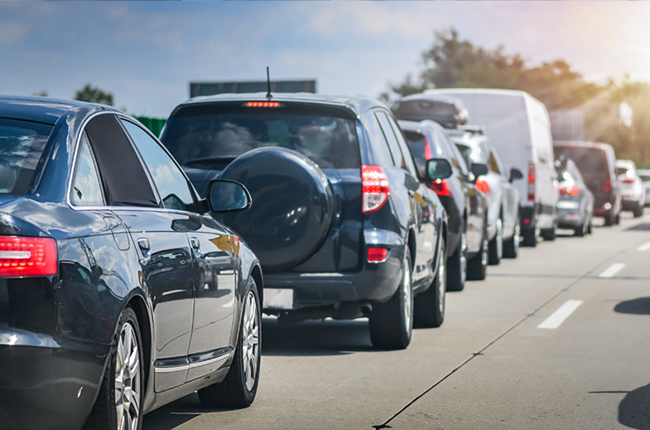
When it comes to fuel efficiency figures in the Philippines you will typically see words such as averages, kilometers per liter, and in some rare cases miles per gallon. Some people swear by fuel efficiency as the main determining factor when buying a car, and there are even some that will justify abysmal fuel figures for the sake of performance and vehicle dynamics. To each his/her own, we guess.
With that said, we’ll talk about how fuel consumption numbers are generated and we’ll also be looking at some terms and give basic formulas on how you can arrive at a more accurate fuel consumption reading for your vehicle depending on your driving style. Warning, there is some math involved here.
Manual Computation

Cars today are so technologically advanced that most come with computers that do the fuel efficiency computations for you. They display all the relevant information you need to know about how much fuel your car is drinking. However, if you want to do it yourself, there is a manual way of computing your fuel consumption which some call the full tank method. If you want to try it out yourself simply follow these steps:
-
Fill your tank to the top
-
Zero the trip counter
-
When you next fill up, note the kilometers driven
-
Fill the tank again and note the number of liters filled into the tank
-
Divide the number of kilometers driven by the amount of fuel added in liters (kilometers per liter)
For example, fill up the tank to full, reset the trip meter, drive around for a day or two, and top up the tank again. The trip meter reads 140 kilometers at the gas station, and it takes 20 liters to fill up the tank again. So divide 140 by 20, which equals 7. The last drive between visits to gas stations equals 7 km/L of fuel consumption.
Liters per 100 kilometers

In some vehicles, they will note their fuel efficiency readings by liters per 100 kilometers. Or L/100km. To convert this to kilometers per liter, simply divide 100 by the number of liters next to the “L." So, if the reading says 6L/100km, that’s 100 divided by 6, which equals 16.6 kilometers per liter (km/L). Easy, right?
MPG to km/L (and vice versa)

This is a rare sight to find on Philippine market vehicles especially as dealerships even for American vehicles already place the fuel economy figures to kilometers per liter instead of miles per gallon. That said, if you do stumble upon a vehicle with miles per gallon (mpg) and want to convert it to kilometers per liter (km/L), simply multiply the mpg value with 0.4251.
25 miles per gallon multiplied by 0.4251 is equal to 10.63 kilometers per liter. \
Now if you want to convert km/L to mpg, you multiply the kilometer per liter value to 2.353.
10 kilometers per liter multiplied by 2.353 is equal to 23.53 miles per gallon.
General guidelines

Something to remember is that the fuel consumption figures that are provided by manufacturers are simply a guideline for comparison. They are typically done in the laboratory and under controlled conditions to give out the best fuel efficiency numbers possible. What you want to look out for is the fuel efficiency figures of reviewers as they have more realistic conditions, nevertheless, still, take it with a grain of salt as their conditions may not be the same as yours when you drive the car. Make sure to take note of the speeds they travel and the wording when they describe fuel economy. If they mean average speed, this indicates that there were times that the car was traveling slower or faster than the posted speed.

Another thing to take note of is that many cars employ a start-stop system and hybrid technologies to help alleviate wasted fuel in a variety of driving situations. Transmission with wider bands and more gears to choose from are also becoming the norm, keeping our vehicles in the most efficient and optimum rev range. These all help to reduce fuel consumption and save a little bit more gas for those extra kilometers.
Latest Features
-
The difference between wax and polish / Tips & Advice
Confused about whether your car needs a wax or polish? This article will guide you on what they are and what to choose for your car.
-
The 6 things every Ford Ranger must pass before it leaves the factory / Featured Article
Every Ford Ranger, from the base model to the Ranger Raptor, goes through a full inspection process before it leaves the factory. This includes six steps that make sure it’s ready to drive a...
-
Which GAC AION EV is best for your everyday lifestyle? / Featured Article
The GAC AION lineup has something for everyone, maybe you're after space, speed, or just a smooth city drive. Here's a quick breakdown of which model might work best for your day-to-day life...
Popular Articles
-
Cheapest cars under P700,000 in the Philippines
Jerome Tresvalles · Sep 02, 2024
-
First car or next car, the Ford EcoSport is a tough package to beat
Jun 18, 2021
-
Car Maintenance checklist and guide – here’s everything you need to know
Earl Lee · Jan 12, 2021
-
Most fuel efficient family cars in the Philippines
Bryan Aaron Rivera · Nov 27, 2020
-
2021 Geely Okavango — Everything you need to know
Joey Deriquito · Nov 19, 2020
-
Family cars in the Philippines with the biggest trunks
Sep 20, 2023
-
Head to head: Toyota Rush vs. Suzuki XL7
Joey Deriquito · Oct 28, 2020
-
Why oil changes are important for your car
Earl Lee · Nov 10, 2020
-
2021 Kia Stonic — What you need to know about it
Joey Deriquito · Oct 16, 2020
-
Top 7 tips for buying a used car in the Philippines
Joey Deriquito · Nov 26, 2020



